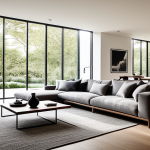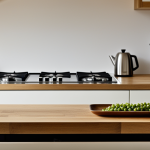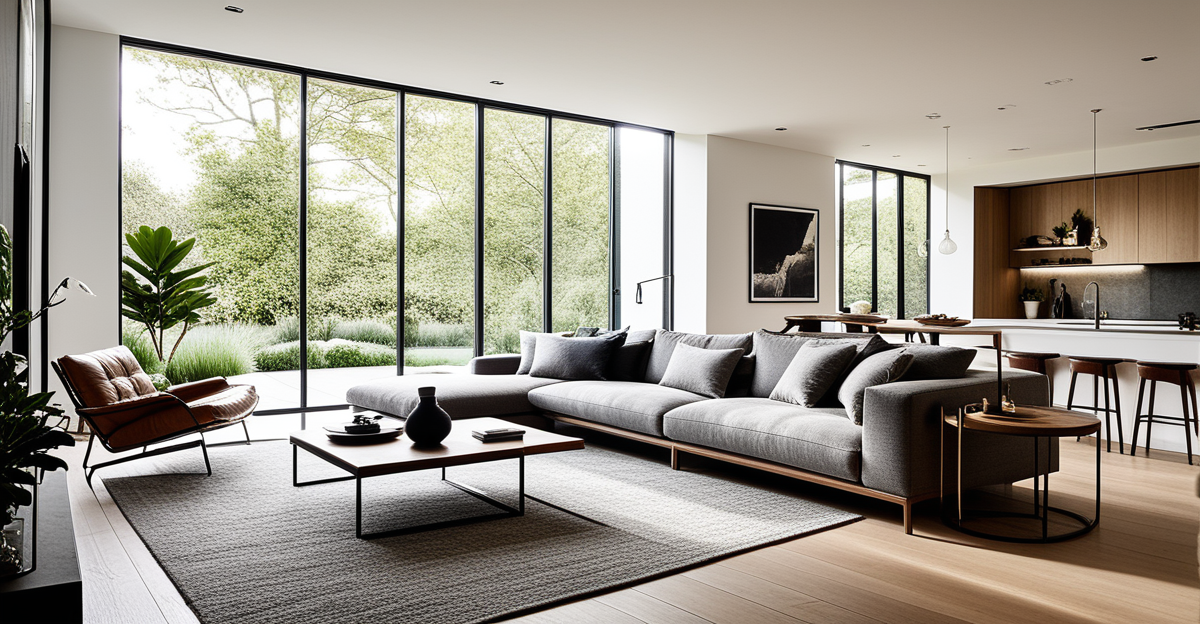Immediate Steps for a More Comfortable Home
Small changes can make a big difference in home comfort. Start by decluttering—removing unnecessary items instantly frees up space and makes rooms feel more inviting. This isn’t just about tidiness; it improves functionality. When fewer objects compete for attention, daily tasks become easier, and stress reduces.
Next, focus on space optimization by prioritizing essential furniture. Choose pieces that serve your needs without overcrowding rooms. Keep walkways open and clear, which promotes easy movement and a sense of spaciousness. This arrangement encourages a relaxed atmosphere and reduces frustration from cramped spaces.
Topic to read : What Are the Essential Elements of a Functional UK Kitchen?
Creating dedicated relaxation zones is another key step. Set aside corners with comfortable seating or soft cushions exclusively for unwinding. This invites you to pause and recharge without distractions. Even a small nook can transform your experience at home by giving you a personal retreat.
By applying these tactics—decluttering, optimizing space, and designing relaxation areas—you lay the groundwork for a more comfortable, functional, and welcoming living environment. These immediate steps align well with long-term strategies to enhance your home’s livability.
Also read : How Can You Transform Your Home’s Ambiance with Simple DIY Projects?
Immediate Steps for a More Comfortable Home
Creating immediate home comfort often starts with space optimization by decluttering. Removing unnecessary items clears physical and visual space, boosting both the aesthetic and usability of rooms. When excess belongings are minimized, essential furniture becomes more prominent, which enhances everyday functionality.
Next, prioritise essential pieces of furniture. An overly furnished room can feel cramped and hinder movement, so keep only what truly supports your lifestyle. Open walkways are crucial; they not only improve safety but also contribute to a relaxed, inviting atmosphere. Arranging furniture to facilitate easy passage encourages flow, making your home immediately feel more comfortable.
In addition, designing dedicated relaxation zones is a highly effective strategy. These might include a cozy reading nook or a quiet corner with soft seating, instantly signaling a space for unwinding. Cushioning these areas with tactile elements like throws heightens the sense of comfort right away.
By combining decluttering, thoughtful furniture arrangement, and designated cozy areas, you can effectively transform your living space into one that feels both functional and welcoming from the outset.
Strategic Furniture Placement for Flow and Functionality
Proper furniture layout is vital to a functional home. Arranging seating and tables to face each other encourages conversation, while keeping pathways clear supports smooth traffic flow. This design not only invites interaction but reduces obstacles, enhancing daily comfort and safety.
Incorporating multi-functional pieces like storage ottomans or foldable desks maximizes space without sacrificing utility. These items are especially useful in smaller areas where every inch counts, supporting both organization and usability.
Adapting your furniture layout with the seasons or changing routines also boosts comfort. For example, shifting chairs to catch more sunlight in winter or creating open play spaces during holidays reflects your lifestyle needs. Such flexibility ensures your home remains both inviting and practical throughout the year.
Understanding these principles allows you to achieve a functional home that feels spacious and welcoming, complementing previous steps like decluttering and space optimization. Thoughtful furniture placement is a key strategy for maintaining flow and sustaining long-term comfort.
Immediate Steps for a More Comfortable Home
Achieving home comfort begins immediately with effective decluttering, which frees up physical and visual space to enhance both appearance and functionality. By removing items that no longer serve a purpose, you reduce distractions and create an environment that’s easier to navigate. This step alone can make rooms feel more open and inviting.
Next, focus on space optimization by keeping only essential furniture. Prioritize pieces that fit your daily needs and avoid overcrowding. Open walkways are critical—they allow for smooth movement, reduce stress, and prevent accidents, all of which contribute to comfort. Thoughtful furniture arrangement should balance utility with openness, ensuring every item serves a function without hindering flow.
Creating small relaxation zones complements these strategies. Designate areas with soft seating or cushions where you can pause and unwind without interruption. These zones signal intentional comfort and invite rest, making your home feel more welcoming right away.
By combining decluttering, deliberate furniture choices, and cozy retreats, you establish a foundation for immediate and lasting home comfort that supports everyday living.
Immediate Steps for a More Comfortable Home
Decluttering is the fastest way to enhance home comfort and improve functionality. By removing unnecessary items, you instantly clear physical and mental space, making rooms feel larger and more inviting. Decluttering reduces distractions and helps you focus on what truly matters in your living space.
Prioritising essential pieces of furniture supports this effect. Keep only what serves your daily needs and fits your lifestyle. Avoid overcrowding rooms with too many items. Remember, open walkways are essential—they facilitate smooth movement, reduce the risk of accidents, and create a sense of openness that contributes significantly to comfort.
Creating clearly defined relaxation zones adds immediate value. These can be simple areas with soft cushions or a comfortable chair, designed specifically for unwinding. Such zones mentally signal rest and pause, making your home feel welcoming from the moment you enter.
By combining space optimization, careful furniture arrangement, and thoughtful decluttering, you set the stage for a home that feels both functional and soothing. These immediate steps offer practical solutions for enhancing everyday comfort without extensive effort or expense.
Strategic Furniture Placement for Flow and Functionality
Optimizing furniture layout is key to enhancing both traffic flow and creating a functional home. Arrange seating to encourage conversation and social interaction by positioning chairs and sofas facing each other or around a central focal point. This setup not only invites connection but also improves accessibility, allowing people to move effortlessly through the space.
Incorporate multi-functional pieces, such as storage ottomans or foldable tables, to save space while adding versatility. These elements support a flexible environment that adapts to varied needs, perfect for small rooms or changing activities.
Adapting furniture arrangement seasonally or to suit different routines can immediately transform how a room feels and operates. For example, repositioning seating closer to natural light sources in summer or arranging chairs near a heat source in winter maximizes comfort with minimal effort.
Carefully considered furniture placement balances aesthetics and practicality, making every square foot work harder. This approach complements earlier steps like decluttering and prioritizing essential furnishings. By focusing on flow and functionality, your home becomes not only more comfortable but also inviting and efficient.
Immediate Steps for a More Comfortable Home
Decluttering is a foundational step for immediate home comfort. Removing excess items clears both physical and mental space, which improves function and makes rooms feel more open. This process directly enhances space optimization, allowing essential elements of the room to stand out and reducing overwhelm.
When focusing on furniture arrangement, prioritise essential pieces that serve your daily needs. Avoid overcrowding; too many items create clutter that hinders flow. Maintaining open walkways is crucial—they ensure smooth movement and reduce stress, making transitions through rooms effortless and safe.
Creating small, dedicated relaxation zones further boosts comfort. These areas, furnished with soft cushions or an inviting chair, offer places to unwind that are visually and physically distinct from active spaces. Even a simple corner can signal rest, encouraging mental breaks in your routine.
In summary, combining decluttering, selective furniture arrangement, and defined relaxation spots addresses immediate needs for both function and coziness. These steps optimize space and foster an environment where comfort starts instantly and supports daily living.








